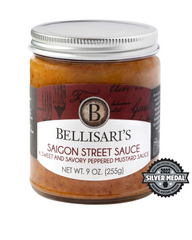
With the cold weather back this week I have been craving soup. Soups can be a variety of things in the kitchen. It can be an efficient way to utilize leftovers, it can be an easy meal when you don't feel like cooking, and it can range from a versatile hearty meal with friends and neighbors to a light complement for a ladies’ lunch.
There are several "tools" that will help you and your soup making. First, a good heavy pot is great for making soup. They hold heat, allow you to maintain steady simmers and gentle boils, and will keep soup warm for a nice long time. Next is a blender. A blender is key when making creamy or puree soups. A traditional blender is fine, it just may take you a little longer to "blend" everything as several "batches" for an entire pot. Better is a hand-held immersion type blender. You can use this right in the pot and have great control and consistency. Lastly, make sure you have a ladle. I know many of us might use a tea cup or something else, but get yourself a ladle with a long handle and a large scoop.
Next are the aromatics, things such as onions, leeks, garlic, and often celery and carrots. Cooking them over low to medium heat in the pan before adding any liquid will help soften their texture and blend their flavors. Cook, stirring occasionally, until they are soft but not browning, about 5 minutes. The goal is to break down their cellulose (making them easier to eat or purée later) and get them to give off some of their liquid, which will deepen the flavor of the soup.
Most soups are primarily water-based, but it can be disguised as broth, stock, wine, or milk. The vast majority of the time, the liquid in soup is stock or broth. For the absolute best flavor use homemade stock; many delis and butchers sell freshly made frozen stock that works great, too. If you buy mass-produced broth find a brand sold in boxes instead of cans to avoid a slight tinny taste. When adding wine to soups, be sure to bring it to a boil and let it cook for at least 10 minutes to cook off the harshest of the alcohol.
Salt/season in layers. Salt soup as chefs do: in layers. Try adding salt to the aromatics and other vegetables as you cook them. If you're cooking the meat separately, make sure it is well seasoned before it goes into the pot. Lastly taste it before serving and add salt accordingly.
Lastly, add a final step of fresh herbs or a dollop of cream or yogurt. Maybe even a little citrus juice depending on the type of soup you made. This last step will take your homemade soup "over the top" for your family and guests.
(Source - The Spruce)






